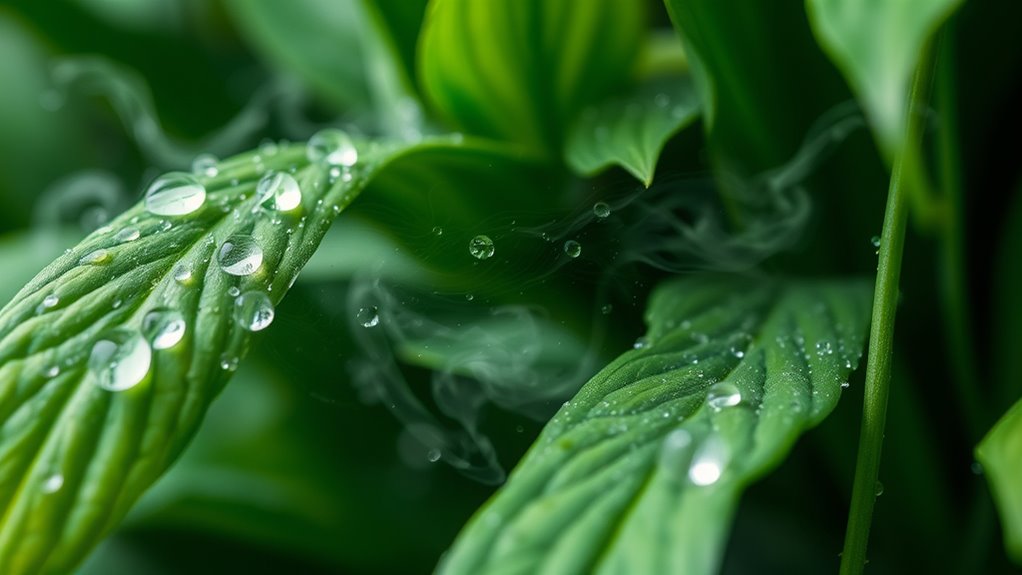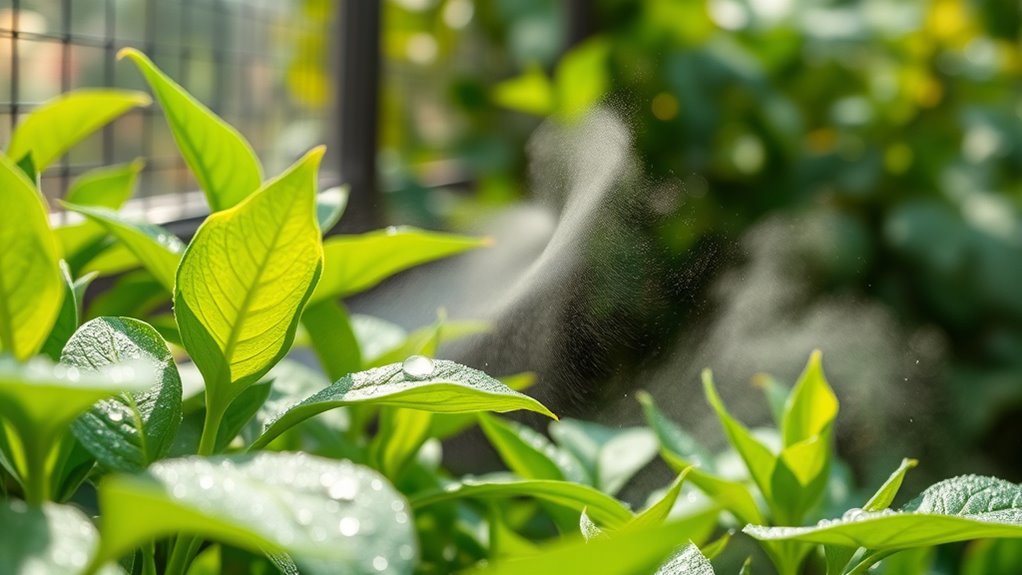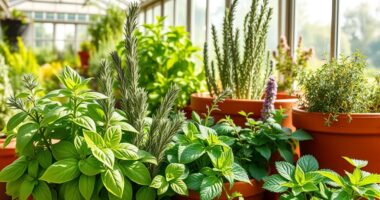To balance moisture for healthy growth, focus on controlling both humidity and airflow in your environment. Proper ventilation helps remove excess vapor pressure, preventing mold and dryness, while airflow ensures even moisture distribution and avoids stagnant air. Using tools like dehumidifiers or humidifiers alongside strategic vent placement can optimize conditions. By maintaining this balance, you create a healthier space that fosters robust growth and air quality—keep going to discover effective ways to master these elements.
Key Takeaways
- Maintain optimal vapor pressure to prevent mold growth and ensure comfortable, healthy indoor environments.
- Enhance ventilation efficiency by improving airflow pathways and exhaust capacity to regulate humidity levels.
- Use airflow balance techniques, like strategic furniture placement and fans, to ensure even moisture distribution.
- Utilize humidity management tools such as dehumidifiers or humidifiers to keep vapor pressure within healthy ranges.
- Monitor environmental conditions with real-time sensors to adjust airflow and humidity proactively for optimal growth conditions.

Humidity and airflow play a essential role in shaping indoor comfort and air quality. When you understand how vapor pressure influences the moisture in your space, you can better manage the environment for healthy growth. Vapor pressure, which measures the tendency of water vapor to evaporate or condense, directly impacts how much moisture is present in the air. If vapor pressure is too high, it indicates excess moisture, which can lead to problems like mold growth and poor air quality. Conversely, low vapor pressure suggests dry conditions that may cause discomfort and respiratory issues. By monitoring vapor pressure levels, you can adjust your ventilation strategies to maintain the perfect moisture balance.
Ventilation efficiency is fundamental because it determines how effectively fresh air replaces stale or humid air in your environment. When ventilation is efficient, it helps regulate vapor pressure by removing excess moisture and reducing indoor humidity levels. Proper airflow ensures that moisture doesn’t linger in corners or enclosed spaces, preventing the buildup of mold spores and other airborne contaminants. If your ventilation system isn’t working well, you might notice persistent humidity issues, stuffy air, or a musty smell. Improving ventilation efficiency involves enhancing the design of your airflow pathways, whether by increasing exhaust fan capacity, installing air purifiers, or ensuring windows and vents are unobstructed. Efficient airflow also dilutes indoor pollutants, contributing to healthier, more comfortable spaces.
Balancing airflow is equally important because it influences how evenly moisture and temperature are distributed throughout your space. When airflow is uneven, some areas may become overly humid while others remain dry, disrupting the balance needed for perfect growth conditions. You can improve airflow by arranging furniture to avoid blockages, using fans, or optimizing the placement of vents and air returns. This helps ensure that vapor pressure remains consistent across the environment, reducing hot spots or moisture traps that foster mold or bacteria growth.
In addition to adjusting ventilation and airflow, paying attention to humidity levels through dehumidifiers or humidifiers helps fine-tune the environment. When you keep vapor pressure within a healthy range, you support plant growth, prevent health issues, and create a more comfortable indoor climate. Remember, proper ventilation isn’t just about moving air; it’s about managing moisture levels effectively. Improving ventilation efficiency also benefits from advanced monitoring tools, which can provide real-time data to optimize environmental conditions. By understanding and controlling vapor pressure and maximizing ventilation efficiency, you create a balanced environment that promotes healthy growth and ideal air quality.
Frequently Asked Questions
How Does Humidity Affect Plant Nutrient Uptake?
Humidity directly impacts your plant’s nutrient uptake by affecting plant transpiration. When humidity is high, transpiration slows down, reducing nutrient absorption because less water moves through the plant’s system. Conversely, low humidity increases transpiration, enhancing nutrient uptake but risking dehydration. Maintaining ideal humidity levels ensures your plants efficiently absorb nutrients and transpire properly, promoting healthy growth and preventing stress caused by imbalanced moisture.
What Are Signs of Poor Airflow in a Grow Space?
Ever wondered if poor airflow is a problem? You’ll notice stuffy, stagnant air, which can lead to mold, pests, and odor issues. Limited air circulation causes uneven growth, with leaves curling or yellowing. If plants seem sluggish or smells become strong or musty, it’s a sign you need to improve airflow. Proper ventilation not only promotes healthy growth but also aids odor control, keeping your grow space fresh and thriving.
Can Excess Humidity Lead to Mold Growth?
Excess humidity can definitely lead to mold growth, which harms your plants and compromises your grow space. To prevent mold, focus on moisture control by maintaining ideal humidity levels and ensuring proper airflow. Good airflow helps keep surfaces dry and reduces stagnant moisture that mold needs to thrive. Regularly monitor humidity and ventilate your grow area to support mold prevention and promote healthy plant growth.
How Often Should Airflow Be Adjusted During Different Growth Stages?
Like tuning a vintage radio, you should adjust your ventilation schedules regularly. During early growth stages, keep airflow gentle to prevent stress. As plants mature, optimize airflow to strengthen stems and prevent mold. You might need to tweak your ventilation schedules daily or weekly, depending on environmental changes. Consistent airflow adjustments guarantee healthy growth, reduce humidity buildup, and promote a thriving, balanced environment.
What Tools Are Best for Monitoring Humidity and Airflow Levels?
When monitoring humidity and airflow levels, you want reliable tools like a good hygrometer for accurate humidity readings and airflow measurement tools to assess ventilation. Choose a hygrometer based on its precision and ease of use, and select airflow tools such as an anemometer for real-time measurement. Regularly check these tools to guarantee ideal conditions, helping you maintain a healthy environment for your plants’ growth stages.
Conclusion
Think of humidity and airflow as the dance partners of healthy plant growth. When they move in harmony, your plants flourish, their roots soaking up moisture while fresh air keeps pests and diseases at bay. Ignore their rhythm, and growth stalls or suffers. By balancing these elements, you create a thriving environment—like a well-choreographed dance—that leads to lush, vibrant plants. Keep the rhythm steady, and watch your garden blossom.









